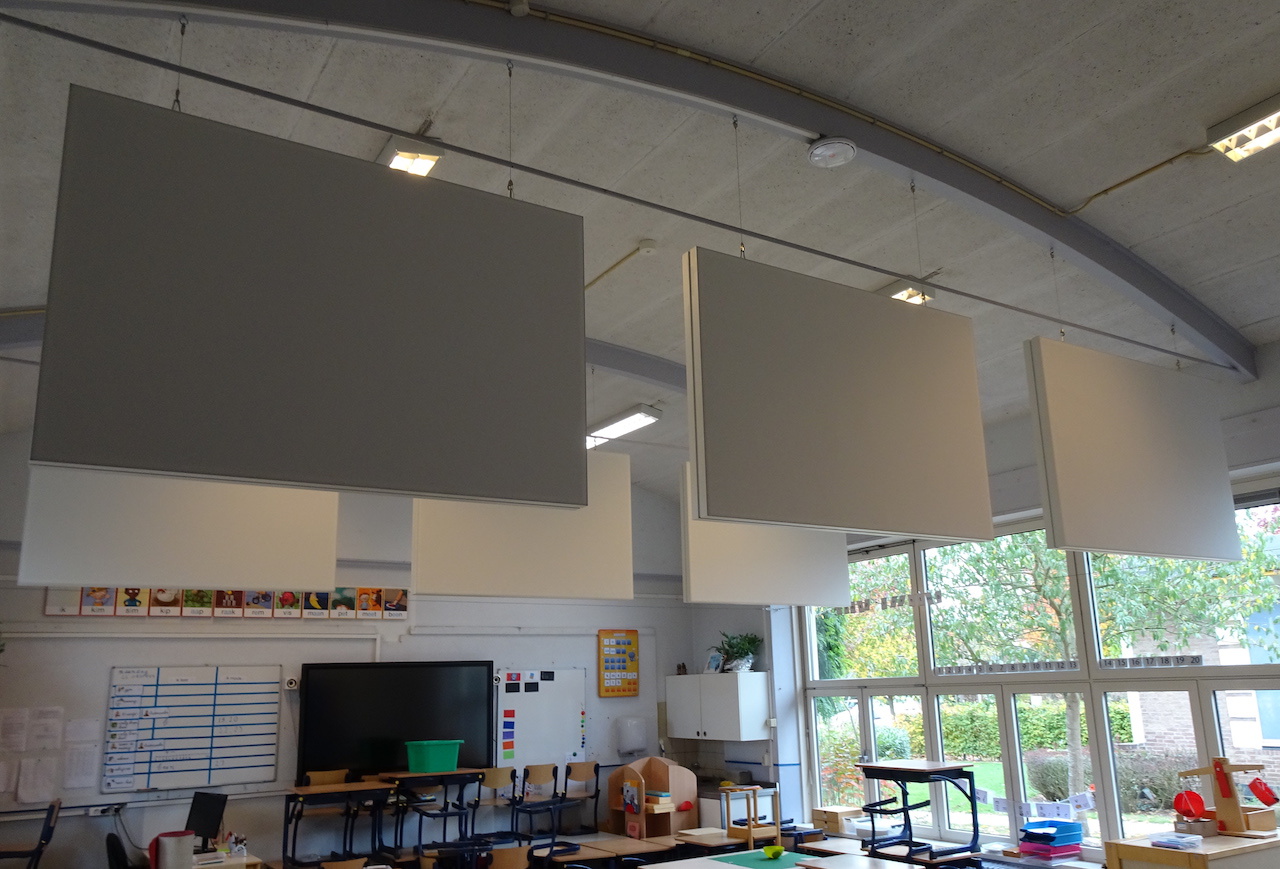Poor acoustics in schools make it difficult to provide good learning and education. And bad acoustics in the classroom cause problems with concentration and tiredness. Worse still, they can result in pupils finding it hard to understand teachers – and vice versa. Fortunately, sound reverberations in the classroom environment are simple to reduce. How? Find out in this blog.
Need better acoustics in your school? Here are 3 tips for creating a really pleasant classroom
Clarity is essential in education. Students must be able to hear what the teacher is saying clearly during lessons and they also need to be undisturbed by unwanted noise as they concentrate on their assignments.
A reverberating classroom has a bad effect on the performance of both teachers and pupils. And in the long term, poor acoustics can even cause health issues, such as fatigue, voice problems or stress.
How changes in education have an effect on acoustics
Many of the school buildings in Belgium are getting old. In days gone by, classrooms had lots of windows to bring in natural light and soft colours to encourage the pupils to concentrate. The ceilings were high and the interior somewhat on the sober side.
During lessons, the teacher stood at the front and spoke, while the children stayed sitting quietly at their desks. As a result, the interior design and architecture of the school building did not cause any problems in terms of acoustics.
Teaching today
Nowadays, modern student-oriented teaching methods are used in which class lessons are combined with group projects. More often, pupils work together in an open learning environment where they can talk to each other about the work they are doing. Increasing use is also made of electronics: the children work on laptops and teachers use digiboards displaying audiovisual learning materials.
As a result, the overall noise level in the classroom has risen and concentration has decreased. This means that the performance of both teachers and pupils suffers as a consequence.
Tips for improving the acoustics in your school
1. Soak up the sound with soft materials
Old school environments tend to feature high spaces and hard materials, which reflect sound and create reverberations.
Installing soft materials can help to partially offset the way sounds bounce around and so improve the acoustics significantly as a result.
2. Divide the space and break up the noise
If the space available allows, divide it up by creating little corners for groups and installing cupboards. By doing this, the way sounds bounce around is broken up and reverberations reduced.
3. Bring in the help of an acoustics specialist
Good acoustics depend on the way the curriculum is designed and the space lessons are given in. For example, a music room or a gym hall need to have different sound specifications and the acoustic solutions that go with them.
To make these sound specifications work, you need to have the right sound-absorbing materials positioned in the right places. So, the best thing to do is to bring in an acoustics specialist to achieve the most effective results.
Do you suffer from poor acoustics at your school? If you do, then take action and create a pleasant teaching and learning environment with us. Contact us to discuss the various options you have – there’s no obligation!
Using sound reverberation readings, we can determine which materials are needed to create a pleasant space for your needs. Our specialist technicians will then install the solutions in the right place.





